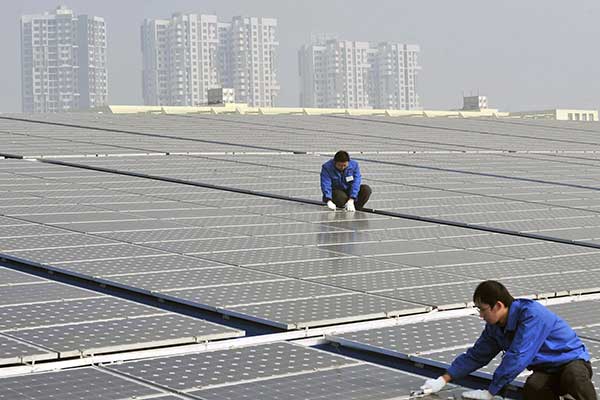China has reached its 2020 climate target three years early.
This target was set to cut the levels of CO2 emissions associated with each unit of GDP by 40-45 percent by 2020, compared to 2005 levels. The country hit a 46 percent reduction in 2017.
This success is largely attributed to China’s commitment to renewables, especially solar power. This year China is set to install a record 45,200 MW of solar capacity, roughly half the global total.
The industry has beaten analysts’ expectations, as technological advancement helped to lower the cost of solar panels by 90 percent over the past eight years, while power prices have been cut by 77.5 percent.
This year’s volume could even surge to between 48,000 MW and 50,000 MW from 34,400 MW last year, amid a possible rush to install rooftop solar panels if Beijing announces that it will rollback subsidies for off power grid solar projects.
Experts expect this rapid solar growth to slow down when this subsidy rollbacks kick-in.
This rollback will negatively affect the market as it will create a cash flow crunch. Solar developers will face difficulties covering solar panel costs, a problem that has plagued new solar installations since 2014.
“With developers’ elevated debt leverage and lengthening collection periods of tariff subsidies, projects’ payback periods are getting too long,” said Canadian Solar Chief Commerical Officer Zhuang Yan in a statement.
IHS Market Senior Analyst Frank Xie Feng said he predicts yearly new Chinese solar capacity to drop between 30 GW to 35 GW from 2018 to 2021.
China’s solar capacity has grown exponentially in recent years reaching 15.2 GW, in 2015, and 34.5 GW in 2016, according to the International Energy Agency Photovoltaic Power Systems (IEAPVPS) annual report.
Will China’s possible solar slowdown have an impact on renewable energy projects or future climate policy around the world? No one really knows for sure, but it’s highly unlikely.
However, if China’s solar industry does slow down, it may provide hidden market signals, making possible investors hesitant on solar investments which may cause a ripple effect.
China will need to ensure power transmission demand issues are fixed and balancing out incentives for developers to avoid over-investments that could overheat the market.
It will be interesting to see what happens if, at all, the Chinese solar industry does slow down and what effect this will have on the global solar market.













Comments